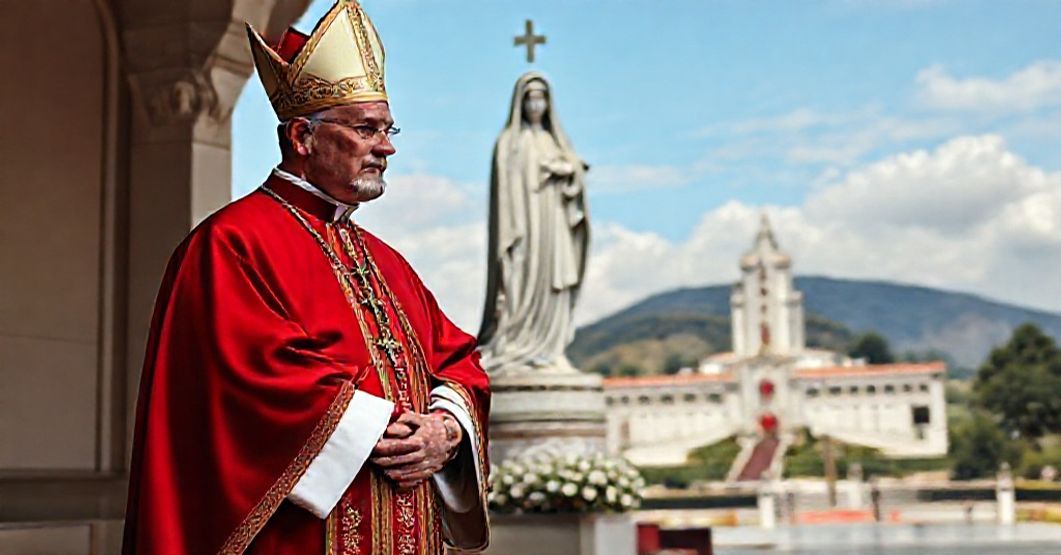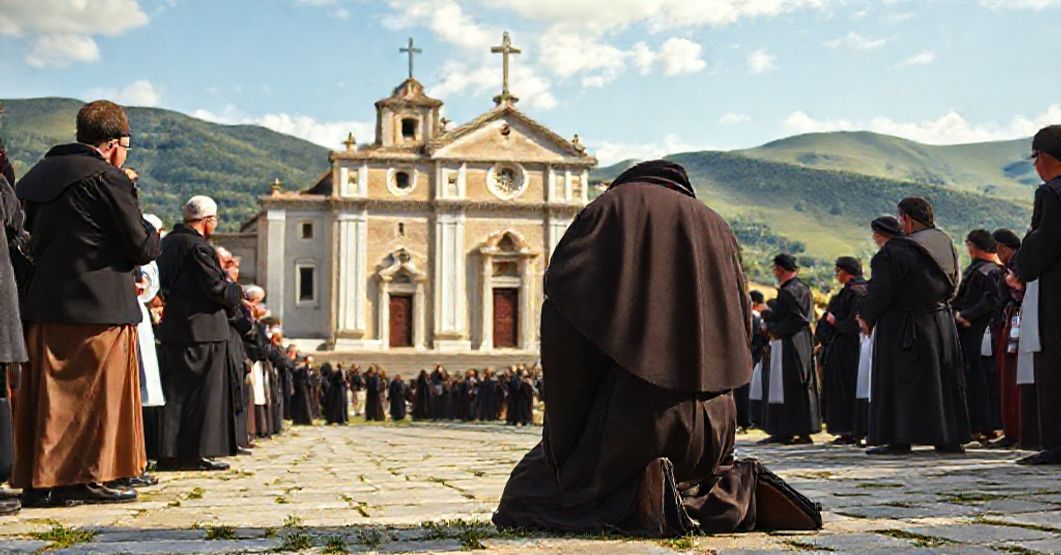Antipopes of the Antichurch



















Timeline of this heretical pontiff
Encyclical Letters
+ 15 posts1959
+ 7 posts1961
+ 4 posts1962
+ 2 posts1963
+ 2 postsApostolic Exhortations
+ 3 postsApostolic Constitutions
+ 93 posts1958
+ 6 posts1959
+ 87 postsMotu Proprio
+ 15 posts1958
+ 1 posts1959
+ 1 posts1962
+ 11 postsApostolic Letters
+ 151 posts1958
+ 4 posts1959
+ 63 posts1960
+ 78 posts1961
+ 1 posts1962
+ 4 posts1963
+ 1 postsSpeeches
+ 99 posts1958
+ 2 posts1959
+ 26 posts1960
+ 29 posts1961
+ 16 posts1962
+ 24 postsMessages
+ 6 posts1959
+ 4 postsHomilies
+ 4 postsLetters
+ 152 posts1958
+ 1 posts1959
+ 48 posts1960
+ 32 posts1961
+ 31 posts1962
+ 30 posts1963
+ 10 postsNot categorized
+ 1 posts1958
+ 1 postsNews feed


Qui huius saeculi (1959.03.23)
Whoever walks the dark roads of this age, says this text, will find a safe path of salvation if they cultivate heartfelt devotion to the Blessed Virgin Mary and spread the reign of her Immaculate Heart; therefore John XXIII, acceding to the request of Agustín Herrera, declares the “Blessed Virgin Mary of Fatima” principal patroness, together with St. Dominic, of the Diocese of Santo Domingo de Nueve de Julio in Argentina, granting her all liturgical honors and privileges proper to a diocesan principal patron, and he does so with all the solemn formulas of binding, perpetual juridical force. In one brief page, the paramasonic “pontificate” of Roncalli reveals both its cultic center and its method: elevation of the Fatima construct into a quasi-dogmatic axis of diocesan life, usurpation of papal authority to enthrone a fabricated apparition, and the quiet displacement of the true Christocentric, sacramental, and doctrinal order of the Church by a psychological operation.


Quantum dilectionis (1959.04.10)
Sanctus Gabriel of Our Lady of Sorrows, a young Passionist religious canonized by Pius X and Benedict XV, is here proclaimed by John XXIII as the “principal heavenly Patron” of the Abruzzi region. The text recalls his cult, the basilica at Isola del Gran Sasso, and the influx of pilgrims, then, in the usual juridical formulae, declares and confirms his patronage with attached liturgical privileges for the region.


Materna caritas (1959.04.12)
Materna caritas is a solemn Latin decretal letter of John XXIII, declaring the canonization of Joaquina de Vedruna de Mas, foundress of the Carmelites of Charity, by rehearsing her life, virtues, alleged miracles, and the procedural steps of beatification and canonization, culminating in the formula by which he and the assembled hierarchy “define” her as a Saint of the universal Church. The entire text, however edifying it may appear on the surface, is structurally and doctrinally the self-exposure of an authority already internally subverted, preparing the way for the conciliar revolution by transforming sanctity into an instrument of anthropocentric, naturalistic humanitarianism and by presuming a magisterial authority which, according to perennial Catholic doctrine, a manifest heretic simply does not possess.


Mirabilis tot (1959.04.12)
Mirabilis tot is the solemn Latin decree by which John XXIII, in April 1959, inscribed Carlo da Sezze (Charles of Sezze), a 17th‑century Franciscan lay brother, into the catalogue of canonized saints. The document rehearses at length his humble rural origins, his Franciscan vocation, severe asceticism, mystical phenomena (visions, locutions, stigmata of the heart), reputed miracles during life and after death, and the juridical steps from diocesan inquiries through beatification under Pius IX to final canonization. It culminates in a high liturgical proclamation “as Supreme Pastor of the universal Church” that Carlo and Joaquina de Vedruna are saints for the whole Church, whose cult is commanded and whose patronage is invoked for the success of John XXIII’s announced “initiatives” and for the temporal and spiritual prosperity of peoples.
Varia
Announcement:
– News feed –implemented
– Antipopes separate web sites with their all documents refutation – in progress
